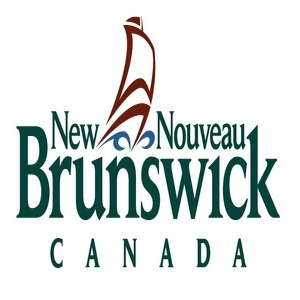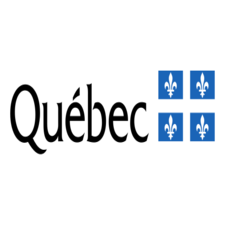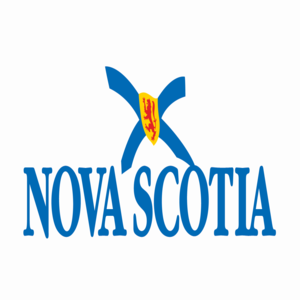maps
Type of resources
Topics
Keywords
Contact for the resource
Provided by
Formats
Representation types
Update frequencies
status
Resolution
-

This data product aimed to extend the existing pre-1985 disturbance history record by mapping wildfire, harvest, and insect outbreaks in Canadian forests between 1965 and 1984. Our geospatial data processing methodology relied on multi-layer perceptrons (MLP) trained on spectral recovery signatures to map and age these disturbances. Specific years were not assigned to insect outbreaks due to the lack of dependable training and validation data. In order to provide a more accurate data product that is compatible with existing datasets (e.g. provincial forest inventories), we used these reliable, but incomplete datasets to correct our predictions of disturbance type and year whenever they were available. Coupled with the updated Canada Landsat Disturbance (CanLaD) data product (Guindon et al. 2017), we are thus able to obtain a pan-Canadian 30m resolution disturbance history record from 1965 until 2023. The full description of the methodology and the exhaustive validation analyses are described in detail in Correia et al. (2024). The following limitations should be taken into account when using this dataset: • It is recommended to group disturbance age predictions into age classes, as this should reduce the noise present in the disturbance age estimation models. • Fire-harvest misclassification seems to be particularly common in transition zones like the southern edge of the Boreal Shield, where fires and harvest are both relatively common. • There seems to be an overestimation of 1965 fires due to a misclassification of burnt areas older than 1965 in northern, less productive areas as belonging to the beginning of our time series. • We likely detected mostly high-severity burnt areas that depict complete mortality, since the faster recovery of low-severity burns makes them more challenging to detect. • Insect outbreak detections were mostly associated with the historic eastern spruce budworm outbreak of the 1970s. Even though pixel-level insect disturbance year was not predicted, realistic estimates can be obtained by cross-checking our data product with historic reports. The following raster layers are available: • canlad_1965_1984_disturbanceType: Estimated disturbance type o 2 = Fire o 3 = Harvest o 4 = Insect • canlad_1965_1984_disturbanceYear: Estimated disturbance year o Numeric value from 1965 to 1984 • canlad_1965_1984_correctionMask: Raster indicating which predictions have been corrected with external datasets o 0 = Unconfirmed disturbance o 1 = Confirmed fire o 2 = Confirmed harvest Please cite this data product as: Correia, D. L. P., L. Guindon, and M. A. Parisien. 2024. Canada-wide Landsat-based 30-m resolution product of disturbance detection prior to 1984. https://doi.org/10.23687/660b7c6a-cdec-4c02-90c7-d63e91825c42 References: Correia, D. L. P., L. Guindon, and M. A. Parisien. 2024. Extending Canadian forest disturbance history maps prior to 1985. Ecosphere [in press]. Guindon, L., P. Villemaire, R. St-Amant, P.Y. Bernier, A. Beaudoin, F. Caron, M. Bonucelli and H. Dorion. 2017. Canada Landsat Disturbance (CanLaD): a Canada-wide Landsat-based 30-m resolution product of fire and harvest detection and attribution since 1984. https://doi.org/10.23687/add1346b-f632-4eb9-a83d-a662b38655ad
-

The Forest Health Section currently monitors for two insects using pheromone traps. Pheromones are the chemical signal insects created by the insect for communication. Pheromones are used for numerous types of communication. In some species they are used to call other insects together (e.g. aggregation), in some they are used to repel others (e.g. anti-aggregation), in most insects these chemical signals are very specific and unique. Scientists have been able to identify and reproduce these chemicals in many species, allowing us to monitor species presence/absences and relative abundance in pest management. For both a) spruce budworm b) hemlock looper the sex pheromone is emitted by the female to attract male moths. The Province places traps containing pheromone lures for both throughout the province. At the end of the season, the number of moths found in the traps give an indication of population trends for that season. These result support additional monitoring efforts such as the SBW fall population forecast. The pheromone traps are useful tools, but they only provide a partial picture on populations because in the case of both spruce budworm and hemlock looper the pheromone attract the male moths only. Each marker on the spruce budworm map represents three traps hung in a 40m spacing array, the value posted is the average of the three traps counted./À l’heure actuelle, la Section de la santé forestière surveille deux insectes au moyen de pièges à phéromone. Les phéromones constituent le signal chimique que les insectes créent pour communiquer. Les phéromones servent pour de nombreux types de communications. Pour certaines espèces, elles servent à rassembler d’autres insectes (p. ex., agrégation); pour d’autres, elles servent à repousser les autres (p. ex., anti agrégation). Chez la plupart des insectes, ces signaux chimiques sont très spécifiques et uniques. Les scientifiques ont réussi à déterminer et reproduire ces signaux chimiques avec nombre d’espèces, ce qui nous permet de surveiller la présence
-

The "Atlas of New Brunswick - Digital Edition" contains over 2000 maps across two scale levels (1:30,000 and 1:150,000). These maps can be viewed in their digital format (PDF) or they can be downloaded and printed. All maps are formatted to be printed on a tabloid sized page (11" x 17"). Printing on a different page size will distort the scale of the maps. An index of featured place names is also included which is updated weekly.
-

The Examine documentary collection contains more than 80,000 documents (bibliographical data, reports, maps). **This dataset only contains the location of the documents**. A link in the data provides access to reports, maps, and other data.**This third party metadata element was translated using an automated translation tool (Amazon Translate).**
-

Nova Scotia School Board zones.
-

Nova Scotia School Board zones.
-

Vaccine Provider app for the Flu and COVID-19 vaccination season. This application displays the location of COVID-19 and Influenza vaccine providers within the province of Manitoba. Vaccination sites are symbolized as a pharmacy, medical clinic, provincial vaccine clinic, etc. Other information available for each site includes provider name, whether they are accepting appointments, the address, and any special notes or restrictions on the location. Manitoba’s Regional Health Authorities are also displayed for context.The vaccine provider data within the app is populated by Manitoba Health, Seniors and Long-Term Care.
-

**Bathymetric Maps – Open**, are bathymetric maps that are published under the Open Government Licence – British Columbia (OGL) based on their Province of BC ownership. **The associated resource Bathymetric Maps - Open – Reference Table and Maps** provides a reference table that includes URLs to PDF bathymetric map files published under the OGL. **The associated resource Bathymetric Maps - Open – Reference Table – Data Definitions** provides data definitions for the associated resource Bathymetric Maps - Open – Reference Table and Maps.
 Arctic SDI catalogue
Arctic SDI catalogue